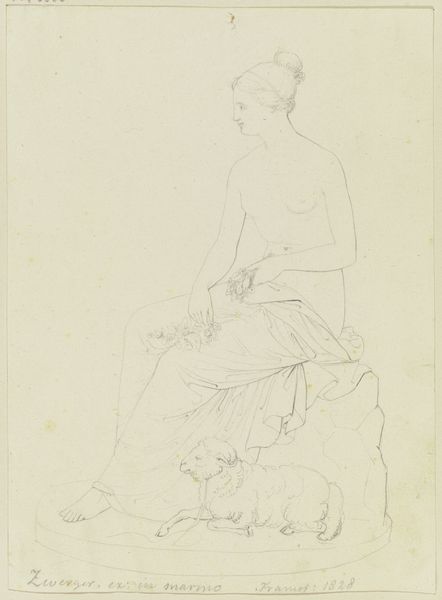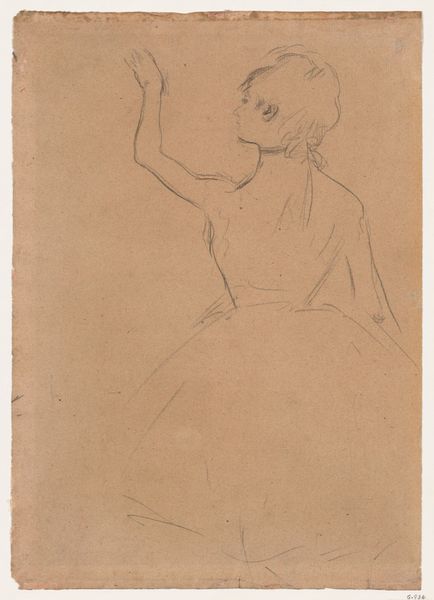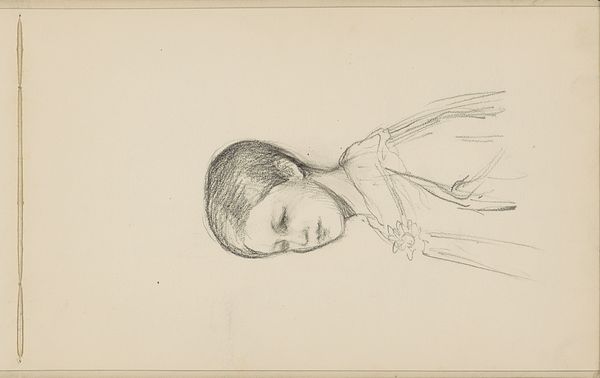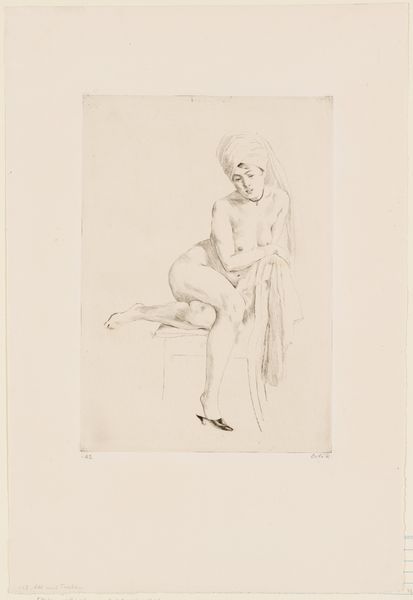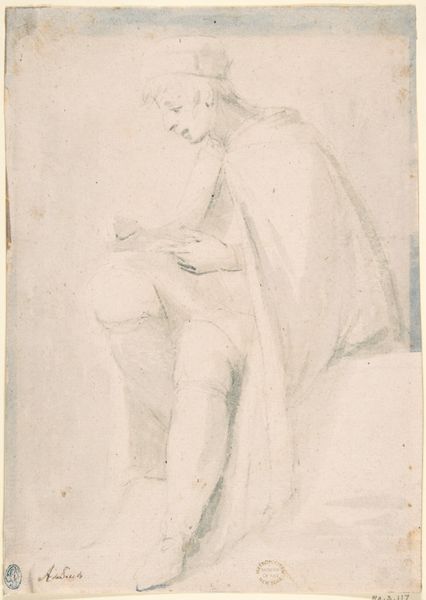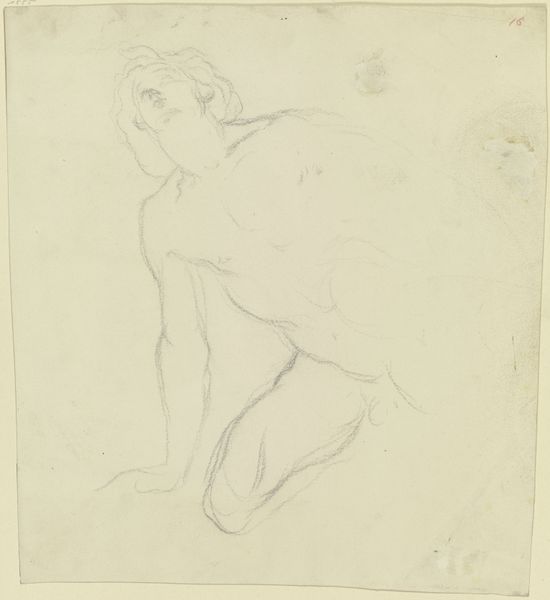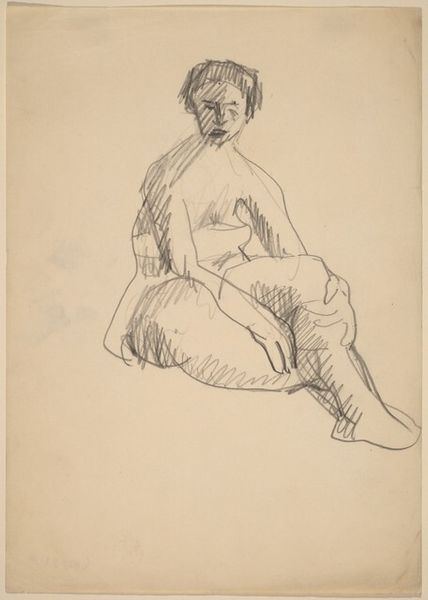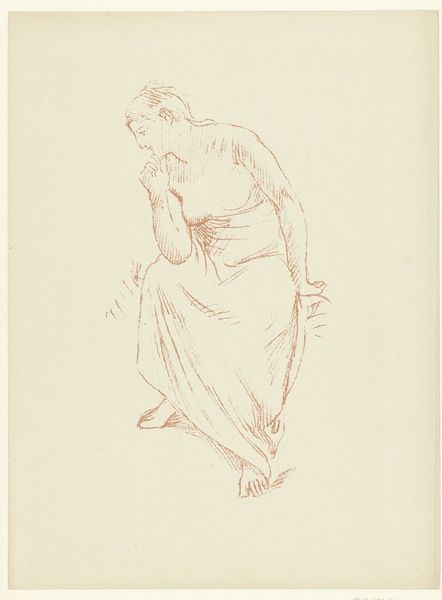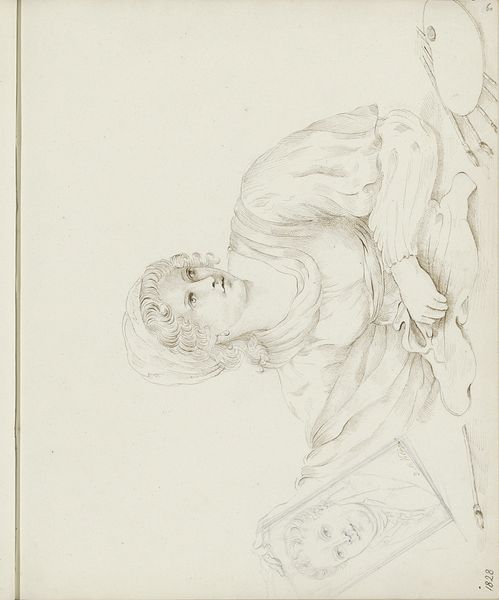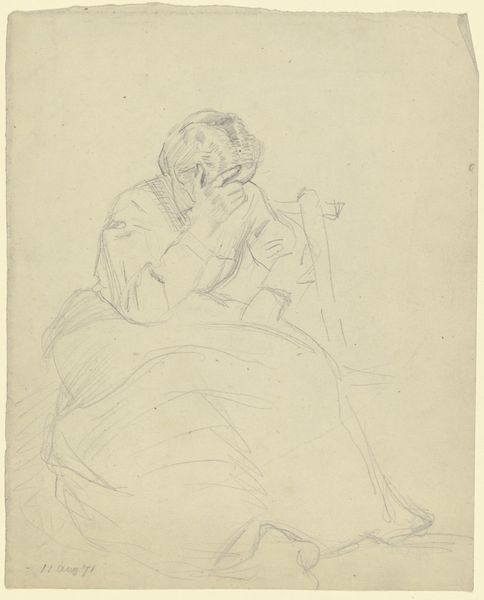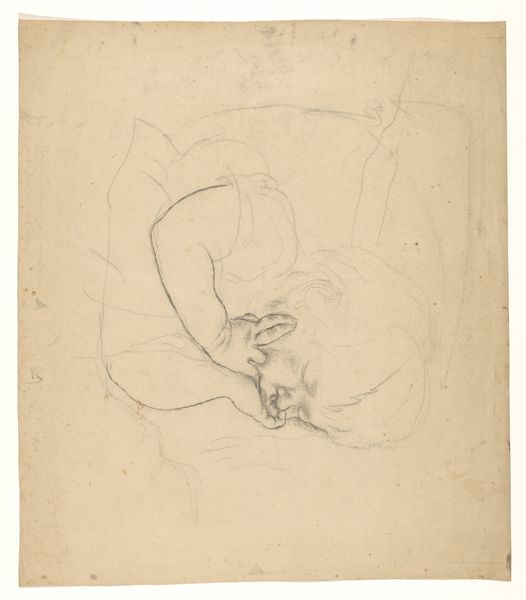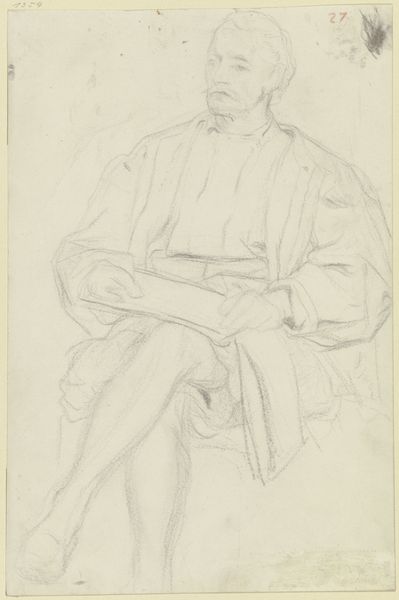
drawing, paper, pencil, chalk
#
portrait
#
drawing
#
classical-realism
#
figuration
#
paper
#
form
#
pencil drawing
#
pencil
#
chalk
#
line
#
portrait drawing
#
academic-art
Dimensions: 367 × 244 mm
Copyright: Public Domain
Curator: Let's turn our attention to John Downman's "Statue of Seated Girl," created around 1774. It's currently held here at the Art Institute of Chicago. Editor: There's a quiet sadness to it, isn’t there? The almost monochromatic use of pencil and chalk, the averted gaze…it's contemplative. Curator: Absolutely. Downman's work engages directly with the idealized Neoclassical aesthetic gaining momentum in the late 18th century. This drawing, a study in form, points to a wider cultural fascination with antiquity and its representations of femininity. The subject resembles a Roman sculpture. But the girl is drawn with lifelike soft lines, and therefore made vulnerable in her form. Editor: You know, the gesture of her open hand, though slightly obscured, evokes a sense of offering or perhaps even supplication. It could symbolize generosity, or maybe the traditional virtue of a woman extending her power and agency through generosity, or is it helplessness? It is quite a charged image despite its demure and somewhat subdued style. Curator: Precisely. Within the social and political context of that era, women occupied a specific, and often restricted, position. Downman, through this piece, prompts us to consider the tensions between objectification and the quiet resilience that figures could embody, in their limited and prescribed roles, inside domestic spaces. How can we reclaim and reinterpret spaces dedicated to women? How does their role, function, or symbolic importance transform throughout centuries? Editor: It also echoes those classical depictions of mourning figures we see so frequently on sarcophagi. The image resonates with history through its symbols, hinting at hidden grief and a connection to collective memory, so relevant at this time, and to future cultural expressions that address loss. Curator: Indeed. It layers meaning onto an existing cultural narrative, enriching it with these quiet suggestions of emotional complexity, turning simple chalk on paper into a poignant reflection of the past. Editor: What started as a somewhat academic portrait now has an open wound within the continuum of art. Fascinating how symbols do that!
Comments
No comments
Be the first to comment and join the conversation on the ultimate creative platform.
